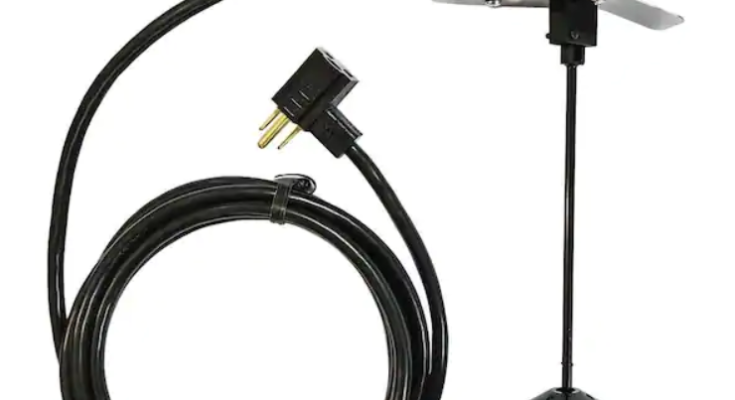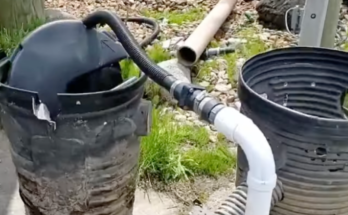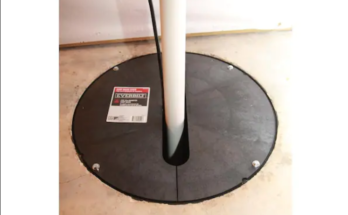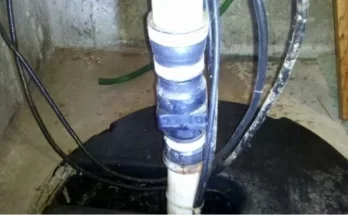Introduction: Debunking Common Misconceptions
Sump pump float switch often get overlooked when it comes to protecting our homes from flooding. Many homeowners believe that as long as they have a sump pump installed, they’re safe from water damage. However, the truth is, without a reliable float switch, your sump pump might not kick in when it’s needed most, leaving your basement vulnerable to water damage.
Understanding Sump Pump Float Switches
Sump pump float switches are like the unsung heroes of flood prevention. They’re responsible for detecting rising water levels in your sump pit and triggering your pump to start removing water before it can seep into your basement. These nifty devices come in various types, each with its own way of sensing water levels.
Types of Sump Pump Float Switches
Tethered Float Switch:
Picture a small ball attached to a cord floating on the water’s surface in your sump pit. As the water level rises, the ball floats up with it, pulling the cord and activating the pump.
Vertical Float Switch:
Unlike the tethered switch, this one moves vertically along a fixed rod as water levels change. It’s more compact and ideal for smaller sump pits.
Electronic Float Switch:
This modern marvel uses sensors to detect water levels electronically. It’s reliable and less prone to getting stuck like traditional float switches.
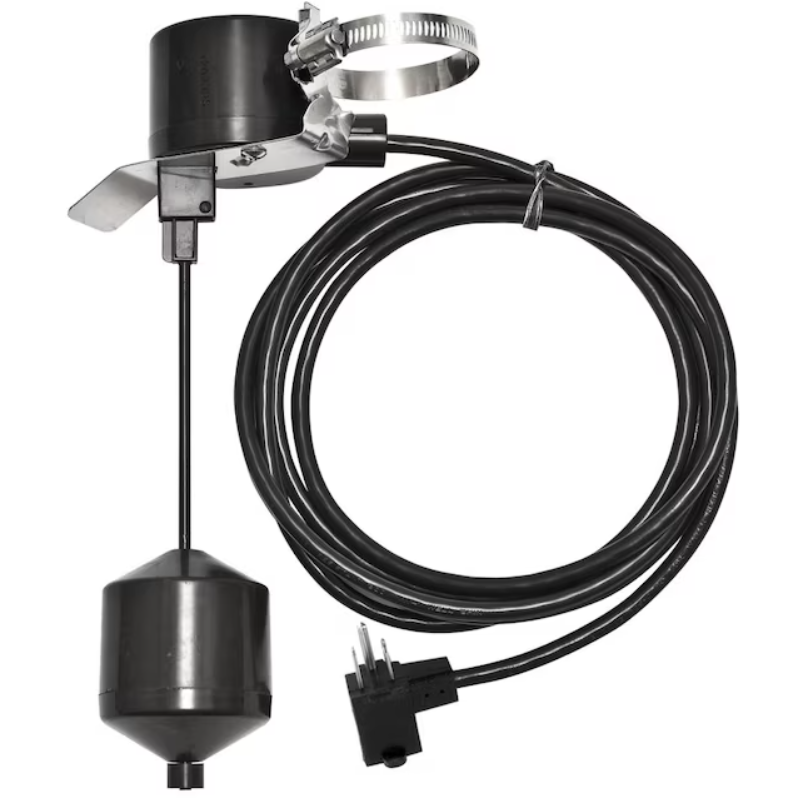
Photo By: mobileimages.lowes.com
Factors to Consider When Choosing a Sump Pump Float Switch
When selecting the right float switch for your sump pump, there are a few key factors to keep in mind:
Size of the Sump Pit:
One of the most critical factors to consider is the size of your sump pit. A float switch that’s too large for your pit may not function properly, while one that’s too small may not detect rising water levels effectively. It’s essential to measure your sump pit accurately and choose a switch that’s compatible with its dimensions.
Power Source:
Another factor to consider is the power source for your float switch. While many switches are wired directly into your home’s electrical system, others operate on batteries. Opting for a battery-powered switch can provide peace of mind during power outages, ensuring that your sump pump remains operational when you need it most.
Durability:
The sump pit environment can be harsh, with constant exposure to water, debris, and even chemicals. Therefore, it’s crucial to choose a float switch made from durable materials that can withstand these conditions without corroding or malfunctioning prematurely. Look for switches constructed from high-quality stainless steel or corrosion-resistant plastics.
Compatibility with Existing Systems:
If you’re replacing an old float switch or upgrading your sump pump system, compatibility is key. Ensure that the switch you choose is compatible with your existing pump and control system to avoid compatibility issues and ensure seamless integration.
Why It Matters
Selecting the right sump pump float switch is not just about convenience; it’s about protecting your home from potential water damage. A properly chosen switch will ensure that your sump pump activates promptly when water levels rise, preventing basement flooding and the costly repairs that come with it.
Dispelling the Notion of Limited Options
It’s a common misconception that when it comes to sump pump float switches, there are only a handful of options available. However, the reality is quite the opposite. The market is filled with a wide variety and variations that cater to different preferences, needs, and situations. Let’s delve deeper into some of these options and uncover their unique features, pros, and cons.
Best sump pump float switch for basement flooding:
This targets homeowners specifically concerned about basement flooding, emphasizing the need for a reliable float switch in this critical area of the home. A float switch designed for basement flooding typically boasts features such as a durable construction to withstand moisture, adjustable settings for precise water level detection, and compatibility with various sump pump models. Pros include enhanced flood protection and peace of mind, while cons may include higher upfront costs and the need for occasional maintenance.
How to install a sump pump float switch in a crawl space:
This variation addresses the unique challenges of installing a float switch in a crawl space, providing valuable guidance for homeowners facing this scenario. A float switch suitable for crawl spaces may feature a compact design for easy installation in tight spaces, corrosion-resistant materials to withstand humid conditions, and clear installation instructions for DIY enthusiasts. Pros include space-saving design and effective flood prevention in crawl spaces, while cons may include limited accessibility for maintenance and potential compatibility issues with existing systems.
Sump pump float switch troubleshooting guide:
For those experiencing issues with their float switch, this offers practical advice and solutions to common problems, ensuring optimal performance. A troubleshooting guide may include steps to diagnose issues such as stuck switches, faulty wiring, or sensor malfunctions, along with recommended solutions such as cleaning, adjustments, or replacement parts. Pros include quick resolution of float switch issues and extended lifespan of the sump pump system, while cons may include the need for technical expertise or professional assistance in some cases.
Top-rated vertical float switch for sump pump:
Homeowners seeking a compact and efficient float switch may find this helpful in identifying the best vertical options on the market. A top-rated vertical float switch typically features a streamlined design for easy installation in narrow sump pits, reliable vertical movement for accurate water level detection, and compatibility with various pump models. Pros include space-saving design and reliable performance, while cons may include limited adjustability and sensitivity to debris accumulation.
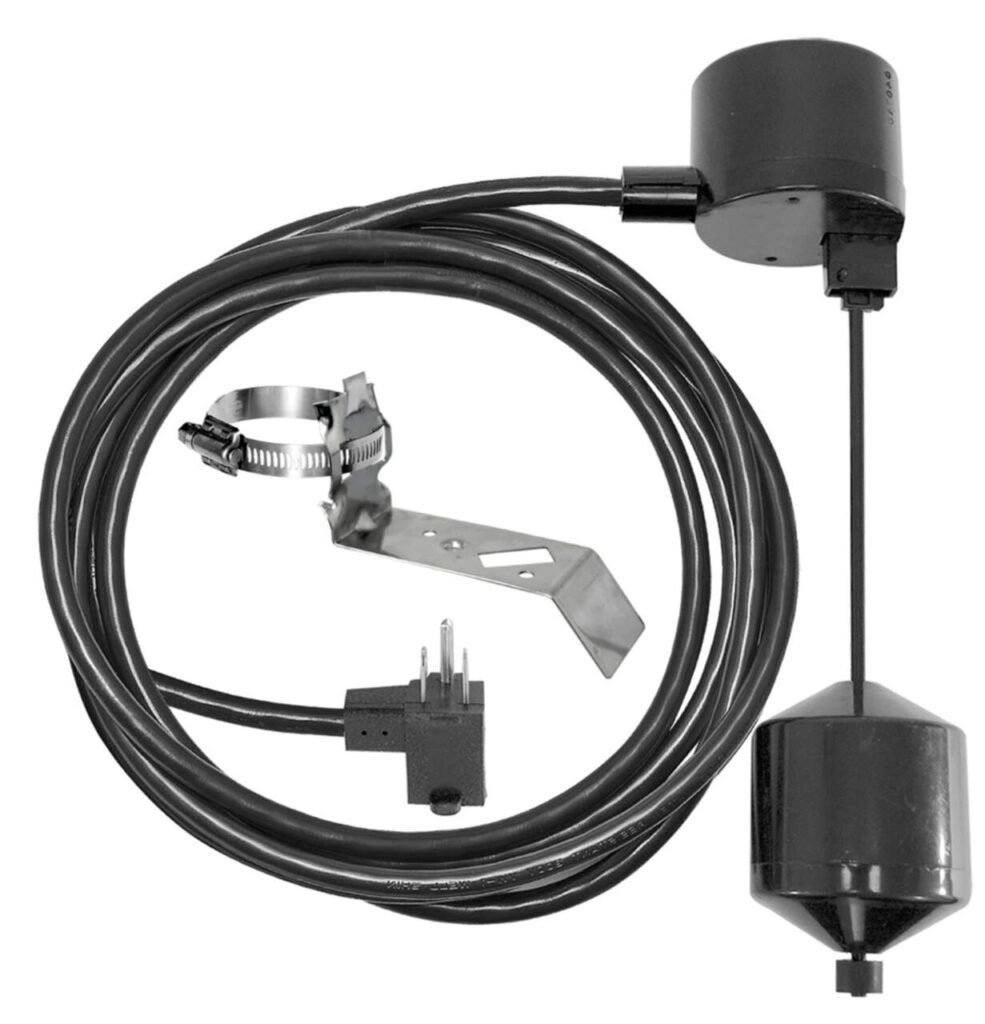
Photo By: media-www.canadiantire.ca
Battery-powered sump pump with adjustable float switch:
This variation caters to individuals looking for a backup solution during power outages, highlighting the importance of battery-powered float switches. A battery-powered sump pump with an adjustable float switch offers continuous flood protection even when the electricity goes out, with features such as rechargeable batteries, adjustable settings for customized operation, and automatic activation during power failures. Pros include uninterrupted flood protection and versatility in various conditions, while cons may include battery maintenance requirements and occasional replacement costs.
Float switch for sump pumps:
A straightforward targeting general searches for float switches, ensuring broad visibility for relevant products and information. A float switch designed for sump pumps may offer basic features such as reliable water level detection, durable construction, and easy installation. Pros include simplicity and affordability, while cons may include limited customization options and sensitivity to debris buildup.
Sump pump float switches:
Similar to the previous, this variation captures a broader audience interested in learning more about float switches for their sump pumps. Pros and cons are similar to those mentioned above, with emphasis on versatility and reliability.
Sump pumps with float switches:
Targets consumers specifically looking for sump pumps that come equipped with float switches, emphasizing convenience and efficiency. Pros include seamless integration and hassle-free operation, while cons may include limited options for customization and higher upfront costs.
Float switches for sump pumps:
This reinforces the idea that float switches are essential components of sump pump systems, highlighting their role in flood prevention. Pros and cons align with those mentioned earlier, with emphasis on functionality and effectiveness.
Sump pump with float switch:
Addresses the need for a complete sump pump system, including both the pump and the float switch, offering a comprehensive solution for homeowners. Pros include ease of installation and compatibility, while cons may include limited options for customization and potential compatibility issues with existing systems.
Frequently Asked Questions (FAQs)
Q: Why do I need a sump pump float switch? A: A sump pump float switch is like the brain behind your flood protection system. It detects rising water levels in your sump pit and tells your pump when it’s time to kick into action and start removing water. Without a float switch, your sump pump won’t know when to start pumping, leaving your basement vulnerable to flooding.
Q: What types of sump pump float switches are available? A: There are a few different types of float switches to choose from, including tethered, vertical, and electronic. Tethered switches use a floating ball attached to a cord, vertical switches move up and down along a fixed rod, and electronic switches use sensors to detect water levels.
Q: How do I choose the right sump pump float switch for my home? A: When selecting a float switch, consider factors like the size of your sump pit, power source preferences (electric or battery-powered), and durability requirements. It’s also essential to ensure compatibility with your existing sump pump system.
Q: Can I install a sump pump float switch in a crawl space? A: Yes, you can install a float switch in a crawl space, but it may require some extra effort due to limited space. Look for compact designs and follow manufacturer instructions carefully for proper installation.
Q: What should I do if my sump pump float switch isn’t working correctly? A: If you’re experiencing issues with your float switch, first check for any obstructions or debris that may be interfering with its operation. You can also try cleaning or adjusting the switch according to the manufacturer’s recommendations. If problems persist, it may be time to consider replacing the switch.
Q: Do battery-powered sump pump float switches require maintenance? A: Yes, like any battery-powered device, it’s essential to perform regular maintenance on your battery-powered float switch. This may include checking battery levels, cleaning battery terminals, and replacing batteries as needed to ensure reliable operation during power outages.
Q: Can I use a float switch with any sump pump? A: While many float switches are designed to work with a wide range of sump pumps, it’s essential to check compatibility before making a purchase. Some switches may be specifically designed to work with certain pump models or brands, so be sure to read product specifications carefully.
Q: Are there any disadvantages to using a sump pump float switch? A: While sump pump float switches are essential for flood prevention, they do have some potential drawbacks. These may include occasional maintenance requirements, sensitivity to debris buildup, and the possibility of malfunction if not installed or maintained properly. However, the benefits of flood protection far outweigh these potential drawbacks.
Q: Can I install a sump pump float switch myself, or do I need professional help? A: The answer depends on your level of DIY skills and comfort with electrical work. Installing a float switch can be relatively straightforward for those familiar with basic home maintenance tasks. However, if you’re unsure or uncomfortable with the installation process, it’s always best to seek professional assistance to ensure proper installation and safety.
Q: How long do sump pump float switches typically last? A: The lifespan of a sump pump float switch can vary depending on factors like usage, maintenance, and environmental conditions. Generally, well-maintained switches can last several years before needing replacement. It’s essential to monitor your switch regularly and replace it if you notice any signs of wear or malfunction.
